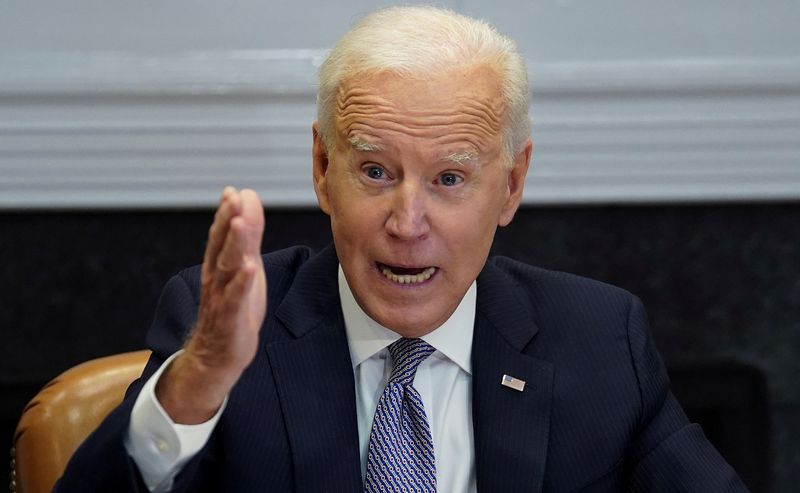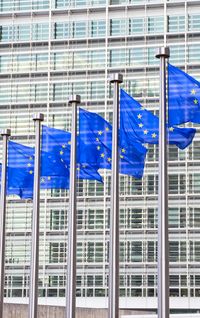Though he is in his 79th year and was dubbed “Sleepy Joe” by his predecessor, President Biden assumption of office had had an effect upon US markets which has been anything but soporific.
On January 4, the 10-year Treasury was yielding 0.93%, but by the end of March it had sold off to 1.74% – virtually double the yield of 10 weeks earlier. The bellwether 30-year had gained an extra 80bp of yield to return around 2.43%, while the two-year only sold off by 8bp to 0.19% as the curve steepened dramatically.
In fact, it was not the November presidential election as much as the January 5 run-off in Georgia – in which the Republicans managed to commit electoral seppuku and lost two very winnable senatorial seats – that spooked the Treasury market. This result effectively gave the Democrats control of the upper chamber as well as the House of Representatives. The world, as they say was now their oyster.
The most immediate result has been the passage of a new US$1.9trn fiscal stimulus package, while a US$2.3trn infrastructure improvement scheme looms. On April 9, President Joe Biden also divulged a US$1.5trn spending plan which excluded the infrastructure initiative, and also projected new spending on Medicare and social security.
The President of the United States has always had a very large cheque book and this one is clearly not afraid to use it. The implications for Treasury supply and inflation in an economy already roaring back from the ravages of Covid-19 are clear, so it is no surprise that yields have backed up.
But analysts trace the uptick in yields further back than the November election to the August 2020 Jackson Hole symposium – traditionally the venue for the announcement of major policy shifts – at which chairman Powell said the Federal Reserve was to adopt a strategy of “average inflation targeting” that would enable monetary policy to “aim to achieve inflation moderately above 2% for some time”.
It was at this point that the market got the picture. “The bear move began on August 6 2020. That’s when rates started to rise and they haven’t looked back since,” said William O’Donnell, rates strategist at Citigroup.
Recent economic data have done nothing to change the view the economy is rapidly heating up. The March nonfarm payroll showed 916,000 new jobs had been added in the previous four weeks, some 250,000 more than the consensus figure, while the March purchasing managers index for manufacturing came in at 64.7%, almost 4% higher than the February number.
So, how high can risk-free yields go and how much can the curve steepen? According to Phoebe White, executive director covering US government bonds for JP Morgan, it seems likely that the largest portion of the short-term move to higher yields has been already accomplished. But, by the end of the first quarter of next year, the five-year will hit 1.25% or higher, the 10-year will reach 2.05% and the long bond 2.70%, she predicts. These yields are about 40bp wider than at the close on April 9 but tend to come in at the conservative end of forecasts.
In fact, while the market looks very one-way, there are currently few signs of a correction to the upside. “The 2012-–2014 and 2016–2018 bond sell-offs saw counter-trend corrections of at least 50bp. But despite a historically high balance in short positioning in bonds in mid-March, corrective rallies have been fleeting to date. We believe that this reflects the still bond-bearish macro set-up that should persist into at least this summer," said O’Donnell.
Although the Fed has indicated it is relatively relaxed about the idea of higher inflation, the improvement to the economy is likely to be sufficient enough for it to initiate tapering of quantitative easing. The last time this happened was in 2013, and the prospect of it was enough to cause what later became known as the taper tantrum.
However, economists and strategists seem convinced this is not likely to happen eight or nine years later. “The Fed has definitely learned its lesson from the 2013 taper tantrum; it wants to tread a lot more cautiously this time,” said Steven Zeng, US rates strategist at Deutsche Bank.
This time around, Chairman Powell has made it clear that he will not think about tapering until economic conditions have improved to such an extent that the economy is in a sustainable recovery, and he appears relaxed about inflation floating higher. He has also said he will give the market as much notice as possible. The frequency of press conferences has been increased since 2013, so Powell can convey to the market the nuances of his thinking more regularly.
Finally, 10-year yields were rich to fair value just before the 2013 tantrum, according to JP Morgan analysis, which left prices vulnerable to a sell-off. On this occasion, they appear cheap to fair value.
Of course, the Treasury will be selling an awful lot of new debt in 2021. One of the reasons the belly of the curve has become unanchored and appears more vulnerable to widening is because supply, particularly of seven-year notes, has been more difficult to digest here than in other segments of the curve. The US$62bn seven-year auction on March 25 had an anaemic 2.23 times bid-to-cover ratio and a 3bp–4bp tail.
The previous record year for net Treasury issuance was 2019, with US$1trn of coupon securities. But this year, with stimulus packages, increased federal spending and an ambitious infrastructure programme to pay for, will see a lot, lot more. Deutsche Bank estimates that US$2.8trn of net new coupon securities will be issued in 2021. JP Morgan’s estimates are broadly in line with this number. It predicts US$3.128trn of net new borrowing, but US$389bn of that will be denominated in Treasury bills.
Gross issuance could be US$4.45trn, over US$1trn more than in 2020 (which was no slouch either). Around US$370bn will be issued every month, with perhaps US$300bn of the grand total issued in 30-year paper, another US$300bn in the new 20-year notes, US$470bn in 10-years and US$744bn in seven-years, according to JP Morgan’s projections.
The capacity of the market to absorb such eye-watering amounts may be doubted, especially as overseas buyers from China and Japan are not such big players as they were in the early years of the century. However, hedge funds and investment funds, mainly based in the US, are expected to pick up the slack, and there are few fears that auctions will not be generally well supported, notwithstanding the recent weak seven-year sale.
With the yield repricing, Treasuries now look good value compared to equities. The 10-year dividend yield is now comparable to the returns offered by the S&P 500. “From a dividend perspective, equities and bonds are beginning to be relatively balanced. As you sell off, particularly as you get to the 2% range, you will see higher sensitivity of risk valuations to the bond yield. Equities will begin to look rich to bond yields,” said Bruno Braizinha, director, US rates strategy, Bank of America Corp.
Moreover, the US dollar increasingly looks a good buy. At the end of last year, it was popular to be short the dollar, as it seemed that the global economy would emerge from the Covid deep freeze at broadly the same rate, so it made sense to buy beta assets which had been profoundly devalued by the pandemic.
In fact, that looks an increasingly naïve assumption, as vaccination rollout as been asynchronous. The EU, for example, has demonstrated its capacity for profound dysfunction and disharmony and lags some way behind the US and UK. Thus, the recovery has proved a positive for the dollar.
“As the world stays anchored in the early stage of rebound and the US economy moves faster into mid-cycle dynamic, then that supports the dollar,” said Braizinha. This, in turn, suggests voluminous numbers of Treasury bonds will find many welcoming homes.
In fact, the markets appear quite relaxed about the record issuance. As the Fed pointed out recently, the cost of debt servicing relative to GDP has remained about the same over the last couple of years despite record issuance.
The trick is to keep the economy growing. If it does not, then things could get messy. This is where Biden’s proposed 7% hike in corporate tax, taking it to 28%, to help pay for all the spending, begins to look very risky.
Cleaning out his closet
And it is not just the case that a fresh wind has blown through Washington; it has been a hurricane. One of the areas in which the hand and the temperament of the new administration have shown themselves most clearly is in the choice of leaders for the agencies trusted with governance of financial markets.
Gary Gensler has been confirmed as the new chairman of the Securities Exchange Commission, in which he and his two Democrats will hold a 3–2 majority. Anybody hoping for a light-touch regulator here will be very disappointed. Gensler was a scourge of Wall Street when he led the Commodity Futures Trading Commission during the Obama presidency and is expected to pick up where he left off.
Rohit Chopra has also been approved by the Senate Banking Committee as the new director of the Consumer Financial Protection Bureau, and that too heads to the Senate floor. The CFPB was created by the Dodd-Frank Act and has been a very controversial agency in its brief history. Trump chief of staff Mick Mulvaney called it a “sick, sad joke” when he was Congressional Representative for South Carolina. Under Chopra’s leadership a much more interventionist stance is predicted than under his predecessor Kathy Kraninger (who was fired by Biden immediately he took office).
Speaking about Gensler and Chopra, Senate Banking Committee chairman Sherrod Brown of Ohio said “They both have a strong record of protecting American families, promoting competitive markets and holding bad actors accountable.” Brown is on the progressive wing of the Democratic Party, and has, for example, made common cause with Bernie Sanders in the past.
Republicans are less enthusiastic about these appointments. “Based on Commissioner Chopra’s record, I’m deeply concerned that he’d return the CFPB to the hyperactive, lawbreaking, anti-business, unaccountable agency it was under the Obama administration,” said Senator Pat Toomey of Pennsylvania, the senior Republican on the Banking Committee.
At the moment, Mark Calabria, head of the Federal Housing Finance Authority, has escaped the stern eye of the administration, but it is likely that the new executive will not be as enthusiastic about returning Fannie Mae and Freddie Mac to private hands.
This was a high priority for Calabria, and, to prepare the two GSEs for an end to conservatorship considerably more onerous capital rules were announced at the end of May 2020. Whether these new requirements will be kicked into the long grass remains to be seen.
To see the digital version of this report, please click here
To purchase printed copies or a PDF of this report, please email gloria.balbastro@lseg.com




























